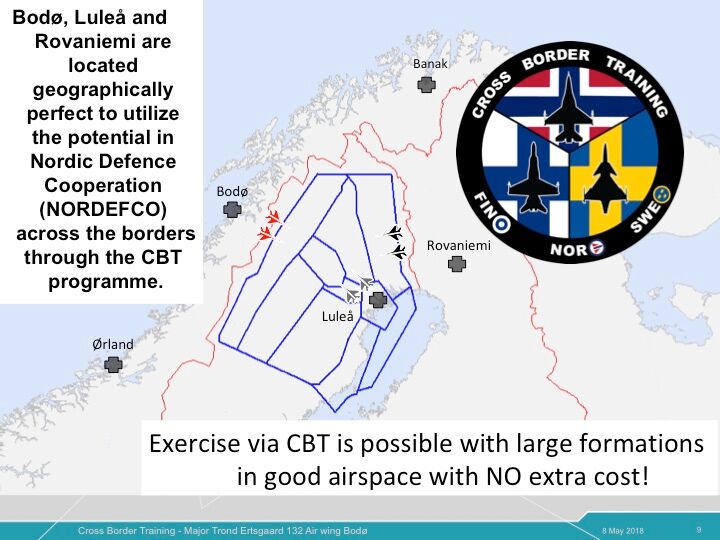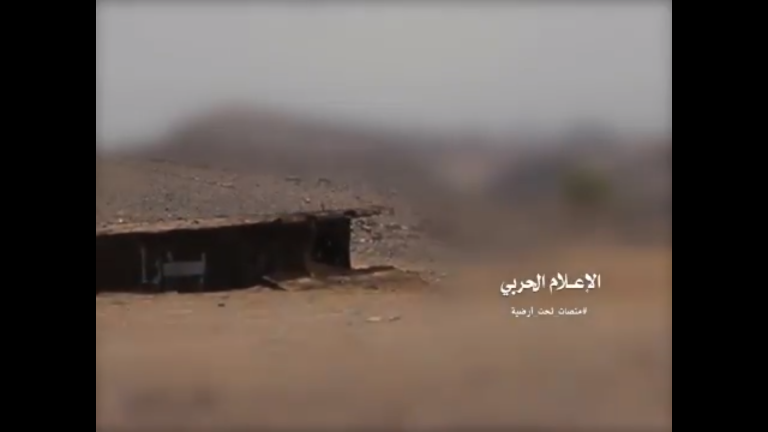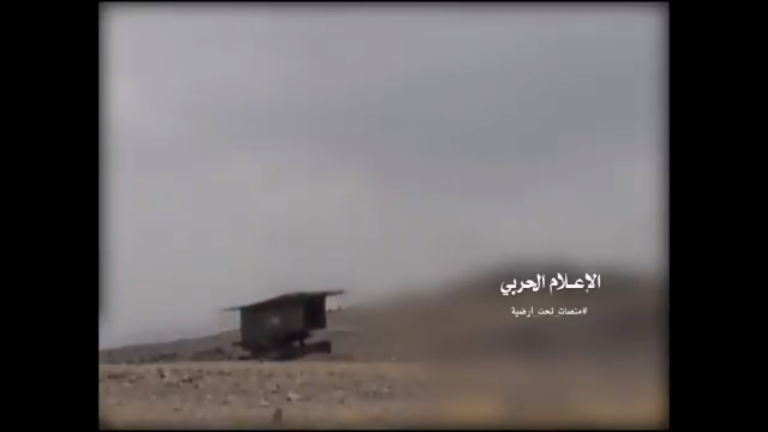For links see article source.....
Posted for fair use.....
https://breakingdefense.com/2018/07...russians-clear-message-we-shall-not-be-cowed/
Nordics Mobilize To Send Russians Clear Message: We Shall Not Be Cowed
By ROBBIN LAIRD on July 03, 2018 at 11:56 AM
166 Comments
Vladimir Putin has clearly focused on expanding Russian influence in the areas of strategic interest to Russia such as the region that stretches from the Baltics to the Nordics.
Proof? They have generated major military exercises designed to influence behavior, such as last year’s Zapad 2018. They have issued nuclear threats against the Danes and the Norwegians at various times over the past few years, saying that if they modernized their defenses the Nordic region they would face nuclear annihilation.
Last year, the Russians simulated military strikes against Norwegian territory and very recently sent a large naval task force from the Kola peninsula without notification. These actions are clearly designed to intimate and to isolate. Of course, the Russians have hoped that European conflicts with the Trump Administration (and disagreements within NATO) would help further isolate the Nordics.
Meanwhile, the United States has diffused its efforts with an over-emphasis on stability operations and counter-insurgency in the Middle East. For example, the Russians are expanding their Arctic capabilities, while both Canada and the United States have essentially ignored the Russian Arctic force modernization effort.
Russia’s threats have not cowed the Nordic states. Instead, they have strengthened their relationship with Washington, with each other through enhanced cooperation and plan focused to mobilize their entire societies to deal with the Russian efforts to intimidate.
The Norwegians, in particular, have focused on mobilization and crisis response. This year’s Trident Juncture 2018 exercise — which NATO bills as a major NATO exercise — is from the Norwegian point of view more than that. It is about testing and enhancement of their Total Defense Concept. For Norway, the Total Defense Concept focuses on the ability of the civilian side of society to support military operations. For example, the Norwegians do not have a specialized military medical service. Civilians are mobilized to support both Norwegian and allied medical needs in times of conflict. This will be tested during Trident Juncture 2018.
In my recent visit to Norway, I discussed the Norwegian preparation for Trident Juncture 2018 with one of the organizers of the exercise, Col. Lars Lervik: “We need to be able to support NATO allies when they come into Norway. I think we’re making real progress with regard to civil society’s ability to support the Norwegian and allied militaries.
“For example, when the US Marines arrive in Undredal, Norway (in the middle of Norway), it could be a civilian bus driver on a civilian bus who will transport them onward to their next location. They might pick up fuel from a local civilian Norwegian logistics company. It is about the resilience as well with regard to civilian society to support military operations. We need to understand and to enhance how the modern society is able to function in a time of crises and war.”
The US Marines are in the midst of a major transformation process and with that effort, allies view them as key partners in shaping an effective crisis management process to deal with peer competitors. Both the Australians and the Norwegians have formalized working relationships with the Marine Corps to broaden their crisis management capabilities.
Notably, the Norwegian government announced on June 13 that they were enhancing their working realitonship with the USMC: “The Norwegian government has decided to welcome continued USMC rotational training and exercises in Norway, with a volume of up to a total of 700 marines, initially for a period of up to five years, says Defense Minister Frank Bakke-Jensen.”
https://breakingdefense.com/wp-cont...18/07/2016-Arctic-map-US-State-Department.jpg
And how did the Russians respond? Predictably with intimidation and threats. “In a statement on its Facebook page, the Russian Embassy said it made the Scandinavian country “less predictable”, while warning it “could cause growing tensions, triggering an arms race and destabilising the situation in northern Europe.” It added: “We see it as clearly unfriendly, and it will not remain free of consequence.”
The Russians used their embassy in country to threaten the Norwegians much like they did with the Danes in 2015. This is part of their approach to information warfare as well whereby they use local tools as well as national tools to shape perceptions within other countries.
But the Norwegians are not the only ones mobilizing their societies to deal with the Russian coercion efforts. And if one compares this to the period of the 1930s where the Nordics simply did not respond to the growing threat from Germany, this time around, the Nordics are seeing a threat, mobilizing and working together.
Conscription has been an important part of Finnish defense, but there is an increasing emphasis on enhanced readiness as well as part of a mobilization strategy. This means shifting emphasis from training conscripts to getting as well better combat readiness out of the mobilization force.
In my discussion with Janne Kuusela, director general of the Finnish Ministry of Defense‘s defense policy department, during a February visit, he argued that one advantage of the conscription process is that the Finnish government is in a position to identify candidates for the professional military, especially the “tech savvy” candidates needed to serve in a 21st century force.
“It is a two-way street with the population,” Kuusela says. “The reservists bring back a lot of current information about technology and society which can then be tapped by the professional military as well as the professional military providing up to date information on the evolution of military systems. I think this is a key capability as new equipment is more technologically sophisticated.”
For its part, Sweden held its largest military exercise in more than 20 years last year. Exercise Aurora 17 involved the forces of several other nations, including Denmark, Estonia, Finland, France, Norway, Lithuania, and the United States. The close cooperation between Finland and Sweden in this exercise was especially notable, as it was the only non-NATO states involved. Along with that new exercise came a new Swedish policy about conscription.
As far as the Trump Administration goes, the Finns and Swedes signed a new trilateral agreement with the United States this past May.
In other words, the response to the Russians illegally seizing Crimea and inserting their forces into the Middle East, have gotten the attention of the Nordics. And their response has been national, regional and working with core allies, including the United States to strengthen crisis management capabilities as well as deterrence.
As one senior Norweigan defense analyst put it during my visit, the Nordics are cooperating more effectively with one another in part through their regional organization, NORDEFCO, which includes Denmark, Finland, Norway, Sweden and Iceland. “I think the discussions among ministers have been taken to an unprecedented level. We also discuss crisis management,” this analyst told me. “We have to prepare ourselves for handing a situation without the Swedes and the Finns, because they are not members of NATO. But we think that it is more and more likely that they would be fully involved in such a situation.
“I think our western partners realize this, so the American footprint in Norway could also be used to reinforce the Baltic states. Having access to Norwegians territory, and perhaps for a door in Sweden and Finland makes a big difference.”
----
I can't help but think of all of those F-16s NATO scrapped at the end of the Cold War due to the cost of keeping them mothballed or political issues around transfering them to another country, even another NATO member...
For links see article source.....
Posted for fair use.....
https://breakingdefense.com/2018/07...oss-border-air-combat-training-thanks-russia/
Nordics Unite For Cross Border Air Combat Training; Thanks Russia!
By ROBBIN LAIRD on July 02, 2018 at 6:18 PM
26 Comments
https://breakingdefense.com/wp-content/uploads/sites/3/2018/07/CBT-Airspace-Nordic-countries.jpg
During the past couple of years, I’ve focused on the part of Europe which is very serious about defense, namely, Northern Europe. The Danes, the Norwegians, the Swedes and the Finns, all have refocused efforts on defense of their nations, but they’ve done so in a broader regional context.
As my colleague Harald Malmgren put it in his analyses of the evolution of Europe:
A new “cluster” of European nations with a common security objective has quietly emerged recently in the form of focused military cooperation and coordination among the Nordic nations, Poland, the Baltic States, and the UK. This cluster is operating in close cooperation with the US military. The Danes, Norwegians, the Swedes and Finns are cooperating closely together on defense matters. Enhanced cooperation is a response to fears of Russian incursions, which are not new, but have roots in centuries of Russian interaction with Northern Europe.
During my most recent visit to Norway in April, I discussed the upsurge in cooperation of the five-member Nordic Defence Cooperation (NORDEFCO) states. Its members are Denmark, Finland, Iceland, Norway and Sweden.
As one Norwegian senior analyst put it during my visit: “How far can we take our NORDEFCO cooperation? We now have a mission paper which extends our framework of cooperation through 2020, and we are working a new one which extends the horizon to 2025.”
The members are working on an “easy access agreement” whereby the forces of the member states can cross borders easily to collaborate in exercises or in a crisis.
During my visit to Bodø Airbase on April 25, 2018, I discussed the cross border air training which Norway is doing with Finland and Sweden. Norway is a member of NATO; Finland and Sweden are not (though both states cooperate with NATO).
The day I was there, I saw four F-16s take off from Bodø and fly south towards Ørland airbase to participate in an air defense exercise. The day before this event, the Norwegians contacted the Swedes and invited them to send aircraft to the exercise, and they did so. The day before is really the point. This is a dramatic change from the 1990s, when the Swedes would not allow entering their airspace by the Norwegians or Finns without prior diplomatic approval.
Maj. Trond Ertsgaard, senior operational planner and fighter pilot from the 132 Air Wing, provided an overview to the standup and the evolution of this significant working relationship. The core point is that it is being done without a complicated day-to-day diplomatic effort: “In the 1970s, there was limited cooperation. We got to know each other, and our bases, to be able to divert in case of emergency or other contingencies. But there was no operational or tactical cooperation. The focus was on safety; not operational training.”
By the 1990s, there was enhanced cooperation, but it was limited to a small set of flying issues, rather than operational training. As Ertsgaard noted: “But when the Swedes got the Gripen, this opened the aperture, as the plane was designed to be more easily integrated with NATO standards.”
Then in the Fall of 2008, there was a meeting of the squadrons and wing commanders from the Finnish, Swedish and Norwegian airbases to discuss ways to develop cooperation among the squadrons operating from national bases. The discussion was rooted on the national air forces operating from their own bases and simply cooperating in shared combat air space. This would mean that the normal costs of hosting an exercise would not be necessary, as each air force would return to its own operating base at the end of the engagement.
The CBT started between Sweden and Norway in 2009 and then the Finns joined in 2010. By 2011, Ertsgaard highlighted that “we were operating at a level of an event a week. And by 2012, we engaged in about 90 events at the CBT level.”
That created a template which allowed for cost effective and regular training and laid the foundation for then hosting a periodic two-week exercise where they could invite nations to participate in air defense exercises in the region. From 2015 on, the three air forces have shaped a regular training approach, which is very flexible and driven at the wing and squadron level.
“We meet each November, and set the schedule for the next year, but in execution it is very, very flexible. It is about a bottom-up approach and initiative to generate the training regime,” Ertsgaard said.
The impact on Sweden and Finland has been significant in terms of learning NATO standards and having an enhanced capability to cooperate with NATO air forces.
The air space they are operating in is very significant as well. Europe is not loaded with good training ranges. The range being used for CBT is very large and is not cluttered, which allows for great training opportunities for the three nations, as well as those who fly to Arctic Challenge or other training events. And the range includes land portions so there is an opportunity for multi-domain operational training as well.
What is most impressive can be put simply: CBT was invented by the units and the wing commanders and squadron pilots. The CBT led to the launching of the Arctic Challenge Exercise. This exercise, last held in 2017, has seen both the regional air forces and partner air forces engage in a major training exercise in the region as well.
According to the US Department of Defense, the Arctic Challenge exercise in 2017, “aims at building relationships and increasing interoperability, and includes participants from the U.S., Finland, Sweden, Norway, the United Kingdom, Germany, France, Belgium, Switzerland, Canada and the Netherlands, as well as representatives from NATO.”
During my visit to Finland in February of this year, the Finnish side of the story was highlighted in a discussion with former Chief of Staff of the Finnish Air Force, Lt. Gen. Kim Jäämeri, who is now deputy Chief of Staff of strategy for the Finnish Defence Forces: “We have enhanced our focus on crisis management and the role of the military within overall crisis management. We have increased our investments in force readiness. With regard to our partners, their enhanced focus of attention on defense, whether it be the actions of Sweden, Norway or Denmark in the region, or by the United States within NATO with regard to the EDI-related investments, has been appreciated. And as we expand our exercise regime, we are cross-learning with regard to capabilities necessary for our defense. You have to leverage your partnerships more to enhance crisis stability.”
In short, the Russians have had a key impact in revitalizing the Nordic countries’ defense postures. Let us hope the allies of the Northern European states interact with and support this strategic opportunity for shaping an effective extended deterrence strategy and for the defense of the region and beyond.
As Keith Eikenes, director for security policy and operations in the Norwegian Minister of Defence, put it in my final interview during my recent stay in Norway: “What type of assets, forces, structures, and cooperation with allies do we need in order to have effective deterrence in the future? We must never lose sight of the fact that what we are trying to do is actually avoid a conflict. Getting the deterrence piece will be extremely important to shaping a way ahead.”
Given the strategic location of the air space in which CBT training and the Arctic Challenge Exercise is occurring, it is a key part of working deterrence in depth in the region and beyond.






